The many reasons fed-up shoppers are abandoning dollar stores in their droves
After years of growth, with dollar stores seemingly popping up in every American city, they now appear to have hit a roadblock.
Dollar Tree shares fell to a nine-year low earlier this week after the chain reported disappointing earnings results.
Earlier this year, the company announced it would close 600 Family Dollar stores by 2024 after struggling to integrate the chain into its own business.
Dollar General, the largest dollar store in the U.S., which is mainly found in poor rural areas, also reported poor sales last month and saw its stock price plummet.
Both companies blamed their problems on their customers’ economic worries, saying Americans struggling financially are cutting back on even the most basic items after years of severe inflation.
But supply chain problems, business missteps, underinvestment in bad stores and competition from big box stores are also contributing to the decline at dollar stores, retail experts say.
Dollar General, which is mainly based in poor rural areas, reported poor sales last month and saw its stock price plummet
Dollar stores have been criticized for targeting store openings in vulnerable communities and exploiting poverty.
But as low-income Americans cut back on spending, the cracks are beginning to show.
“The dollar store sector appears to be facing existential uncertainties,” UBS analyst Michael Lasser said in a note last week, CNN reported.
Shares of all three national dollar store chains have fallen over the past year, with Dollar General down 39 percent through Sept. 4, Dollar Tree down 57 percent and Five Below down 57 percent, according to Forbes.
In April, 99 Cents Only announced it would close all 371 of its stores, citing high inflation and rising theft as the reason for the closure.
Dollar General reported in its latest earnings that poorer Americans are running out of money at the end of the month, meaning they are having to cut back on even the most basic purchases.
Dollar General has more than 20,000 locations in the US.
“Inflation continues to have a negative impact on these households. More than 60 percent of households say they have had to cut back on their purchases of basic necessities because of higher costs,” CEO Todd Vasos said on a call with analysts.
He said most of the chain’s regular customers are households earning less than $35,000 a year.
Dollar Tree, which has stores in middle-class and suburban locations, also said its customers are shopping less in a “challenging” environment.
According to Dollar Tree, households with annual incomes over $125,000 have switched from “buying for what you need” to “buying for what you need” and are spending less money on party supplies and decorations than before.
CEO Mike Creedon said the company is navigating “one of the most challenging macroeconomic environments” it has ever experienced.
But the economy is not entirely to blame, experts say. Both companies also made mistakes in their business strategies.
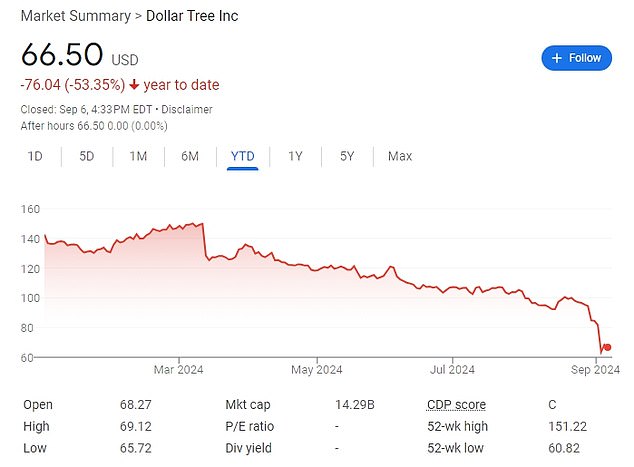
Shares in Dollar Tree have fallen dramatically over the past year

According to Todd Vasos, CEO of Dollar General, poorer Americans are having to cut back on even the most basic purchases.
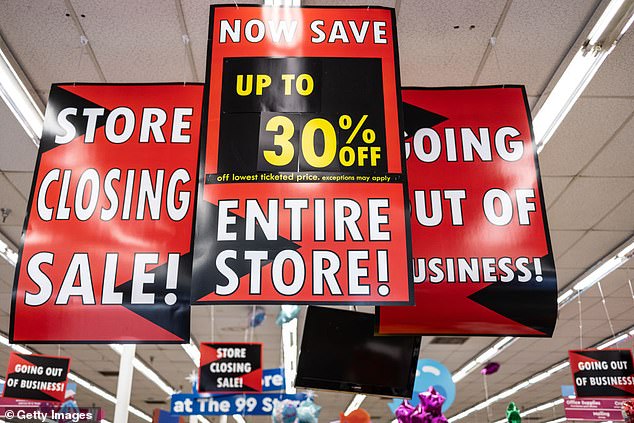
In April, 99 Cents Only announced it would close all 371 of its locations
David D’Arezzo, a former top executive at Dollar General and other retailers, told CNN that Dollar General made a mistake by trying to focus on discretionary items, also known as “non-consumables.”
In recent years, the chain has added more decorations and candles to its shelves, instead of focusing on essential consumables such as food and cleaning products.
“They’re trying to get away from a failed strategy of non-consumables, where they have a lot of inventory,” he said. “They’ve missed that in tough times, consumers are looking for consumables.”
Meanwhile, Dollar Tree is struggling to integrate Family Dollar, which it acquired nearly a decade ago for more than $8 billion.
Family Dollar stores, which are mainly located in American cities, also suffer from crime and shoplifting.
Dollar Tree and Family Dollar together have 16,278 stores in the US.
‘Family Dollar’s sales are sputtering, hurt by neglected stores, poor product selection and disgruntled employees,’ The Wall Street Journal reported from 2018.
Dollar Tree said in March that it was closing hundreds of underperforming stores after the company posted a $1.71 billion loss in the three months ended Feb. 3.
“This dramatic thinning out is the final blow to the rather botched acquisition of the Family Dollar chain, which has caused nothing but trouble for Dollar Tree since it was completed in 2015,” Neil Saunders, managing director of GlobalData, said at the time.
“In fact, nearly a decade later, Dollar Tree is still trying to figure out the mess it inherited and has yet to fully turn the tide,” he said.
Dollar Tree is also struggling with the poor condition of many Family Dollar stores, which are plagued by reports of unsafe working conditions.
The company was ordered to pay $41.6 million earlier this year for using a rat-infested warehouse to distribute products, including food, to more than 400 stores in the southern US.
According to the Ministry of Justice, it was the harshest sentence of its kind ever.
Analysts say competition from other stores, which do not normally fall into the ultra-discount segment, is also affecting sales.
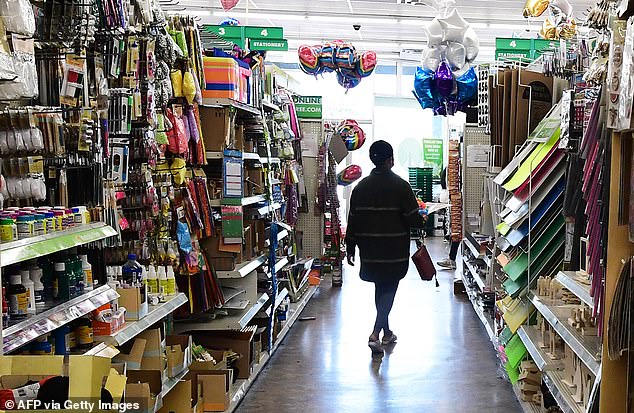
Dollar Tree targets middle-income Americans with party supplies and decorations
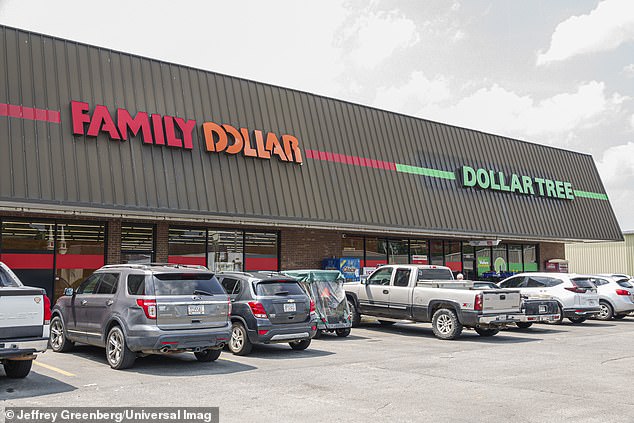
Meanwhile, Dollar Tree is struggling to integrate Family Dollar, which it acquired nearly a decade ago
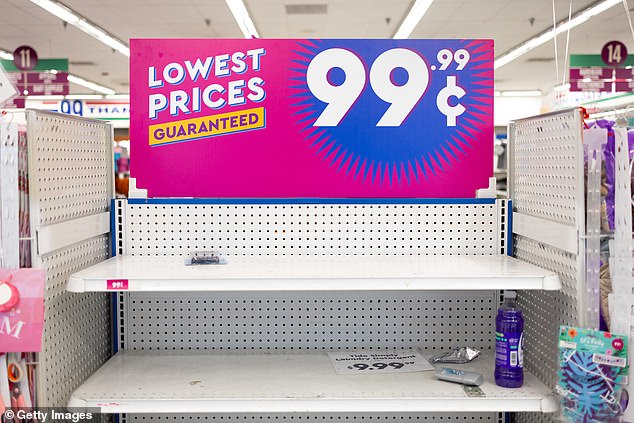
Customers are being turned off by run-down shops and poor product selection at dollar stores, experts say

Anjee Solanki, national director of retail services at Colliers, points out that consumers are still returning to dollar stores, even though they may be spending less
After years of steep price increases, stores like Walmart, Target and Costco are now offering discounts on many essential items.
These retailers, as well as cheap online marketplaces such as the Chinese e-commerce site Temu, are gobbling up the dollar store customers.
Dollar General CEO Vasos admitted during last week’s earnings report that Walmart is “doing a pretty good job” of luring customers desperate for a deal.
“I don’t think there are more customers in the world than Dollar General and Walmart because of their proximity to each other and the density of their stores in the Southeast,” David D’Arezzo told CNN.
“When Walmart is doing well, Dollar General is doing badly.”
Does this change mean the end of dollar store dominance?
Anjee Solanki, national director of retail services at Colliers, points out that consumers are still returning to these stores, even though they may be spending less.
In 2021, dollar stores experienced a significant 11.94 percent increase in average visits, showing a strong recovery from the pandemic, she said. Even in 2022, average visits grew by 4.15 percent, further highlighting the sector’s resilience.
Although the average number of visits fell by 2.37 percent in 2023, the annual figures for 2024 show an increase of 3.09 percent.
“Consumers are returning to these stores despite economic pressures or changes in the retail industry,” she told DailyMail.com.
She believes that Five Below is well positioned for success in the sector, especially in the future.
“This is due to the strategic focus on value, novelty and improving the shopping experience for the key target group (pre-teens and teens),” she said.
She added that sales have increased by 9 percent, showing that it is attractive to customers.
